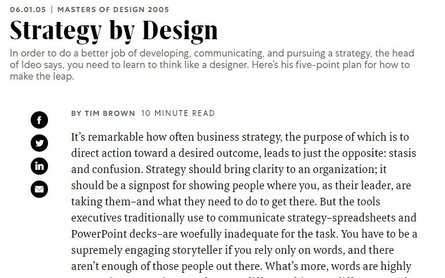
It’s remarkable how often business strategy, the purpose of which is to direct action toward a desired outcome, leads to just the opposite: stasis and confusion. Strategy should bring clarity to an organization; it should be a signpost for showing people where you, as their leader, are taking them–and what they need to do to get there. But the tools executives traditionally use to communicate strategy–spreadsheets and PowerPoint decks–are woefully inadequate for the task. You have to be a supremely engaging storyteller if you rely only on words, and there aren’t enough of those people out there. What’s more, words are highly open to interpretation–words mean different things to different people, especially when they’re sitting in different parts of the organization. The result: In an effort to be relevant to a large, complicated company, strategy often gets mired in abstractions.
People need to have a visceral understanding–an image in their minds–of why you’ve chosen a certain strategy and what you’re attempting to create with it. Design is ideally suited to this endeavor. It can’t help but create tangible, real outcomes.